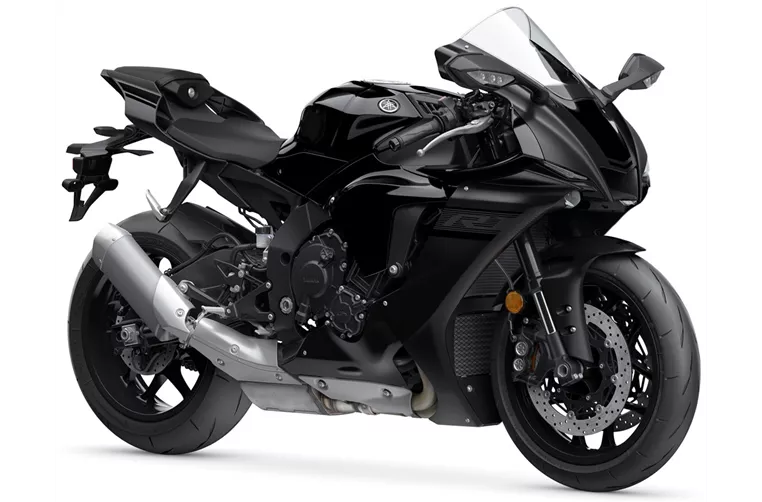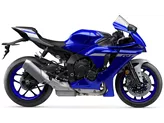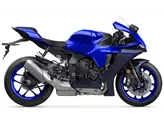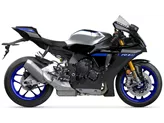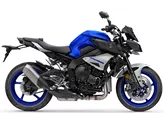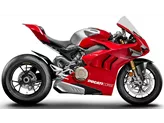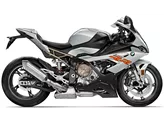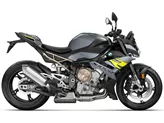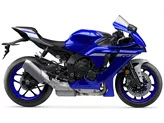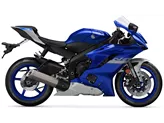BMW S 1000 RR 2023 vs. Yamaha R1 2020
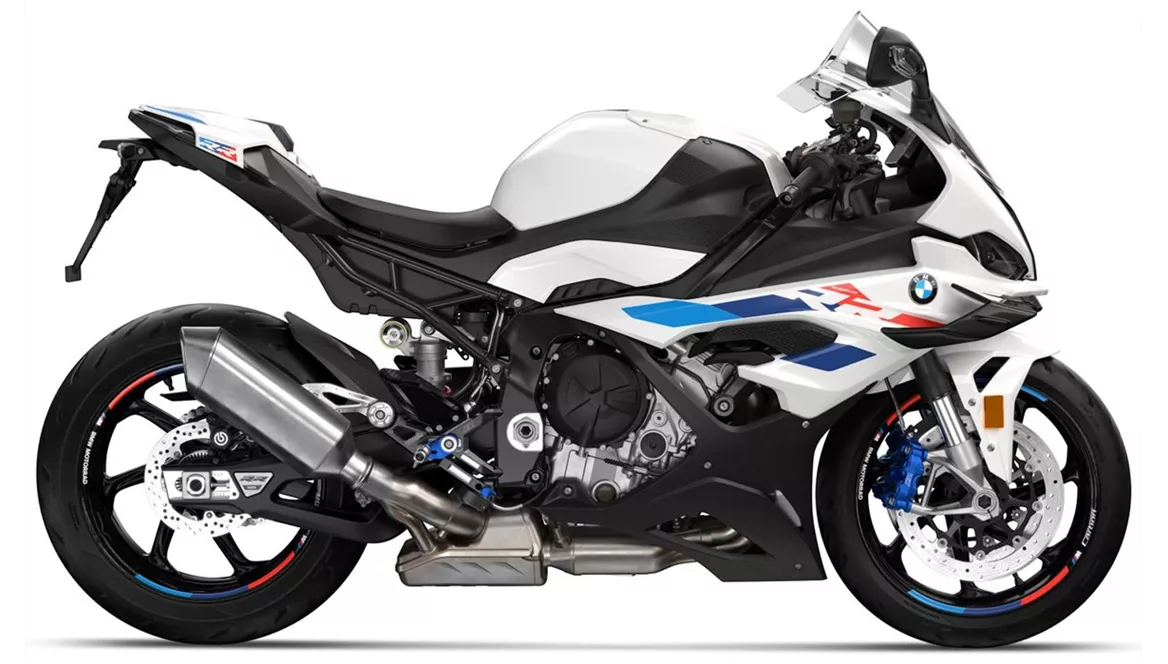
BMW S 1000 RR 2023
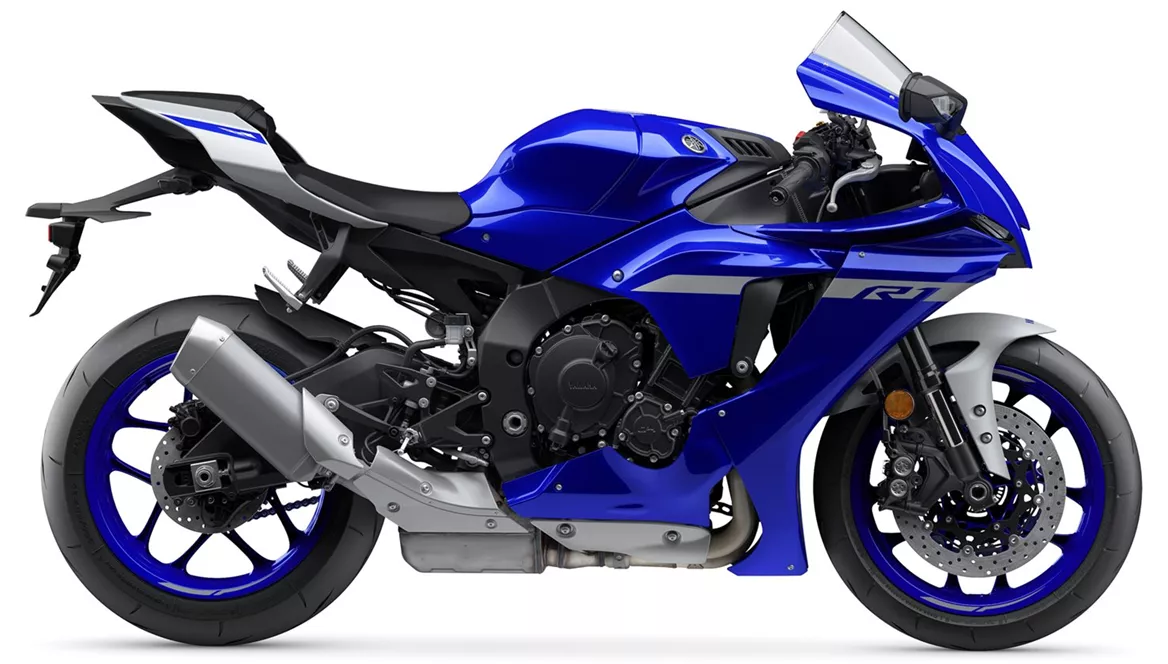
Yamaha R1 2020
Vue d’ensemble - BMW S 1000 RR 2023 vs Yamaha R1 2020
The BMW S 1000 RR 2023 and the Yamaha R1 2020 are both high-performance supersport motorcycles that offer impressive specifications and features. Let's compare them in detail.
In terms of engine specifications, the BMW S 1000 RR 2023 has a bore of 80 mm and a stroke of 49.7 mm, while the Yamaha R1 2020 has a bore of 79 mm and a stroke of 50.9 mm. The BMW S 1000 RR 2023 has a slightly larger engine displacement of 999 ccm compared to the Yamaha R1 2020's 998 ccm. In terms of power, the BMW S 1000 RR 2023 offers 210 HP, while the Yamaha R1 2020 offers 200 HP. The torque figures are also close, with the BMW S 1000 RR 2023 providing 113 Nm and the Yamaha R1 2020 offering 112.4 Nm. Both bikes have a compression ratio of 13 and feature 4 cylinders with 4 valves per cylinder and DOHC technology.
In terms of suspension, both bikes feature upside-down telescopic forks at the front. The chassis of the BMW S 1000 RR 2023 is made of aluminum and has a twin-tube, load-bearing engine design, while the Yamaha R1 2020 features an aluminum Deltabox frame.

BMW S 1000 RR 2023
Both bikes have double disk brakes at the front, but the BMW S 1000 RR 2023 also offers advanced rider assistance systems such as ABS, riding modes, launch control, ride by wire, quickshifter, and traction control. The Yamaha R1 2020, on the other hand, offers launch control and traction control.
In terms of dimensions and weights, the BMW S 1000 RR 2023 has a front tire width of 120 mm and a rear tire width of 190 mm, with both bikes having a 17-inch front and rear tire diameter. The wheelbase of the BMW S 1000 RR 2023 is 1457 mm, while the Yamaha R1 2020 has a slightly shorter wheelbase of 1405 mm. The seat height of the BMW S 1000 RR 2023 is 824 mm, while the Yamaha R1 2020 has a higher seat height of 855 mm. The kerb weight of the BMW S 1000 RR 2023 with ABS is 197 kg, while the Yamaha R1 2020 weighs slightly more at 199 kg. The fuel tank capacity of the BMW S 1000 RR 2023 is 16.5 liters, while the Yamaha R1 2020 offers a slightly larger fuel tank capacity of 17 liters.
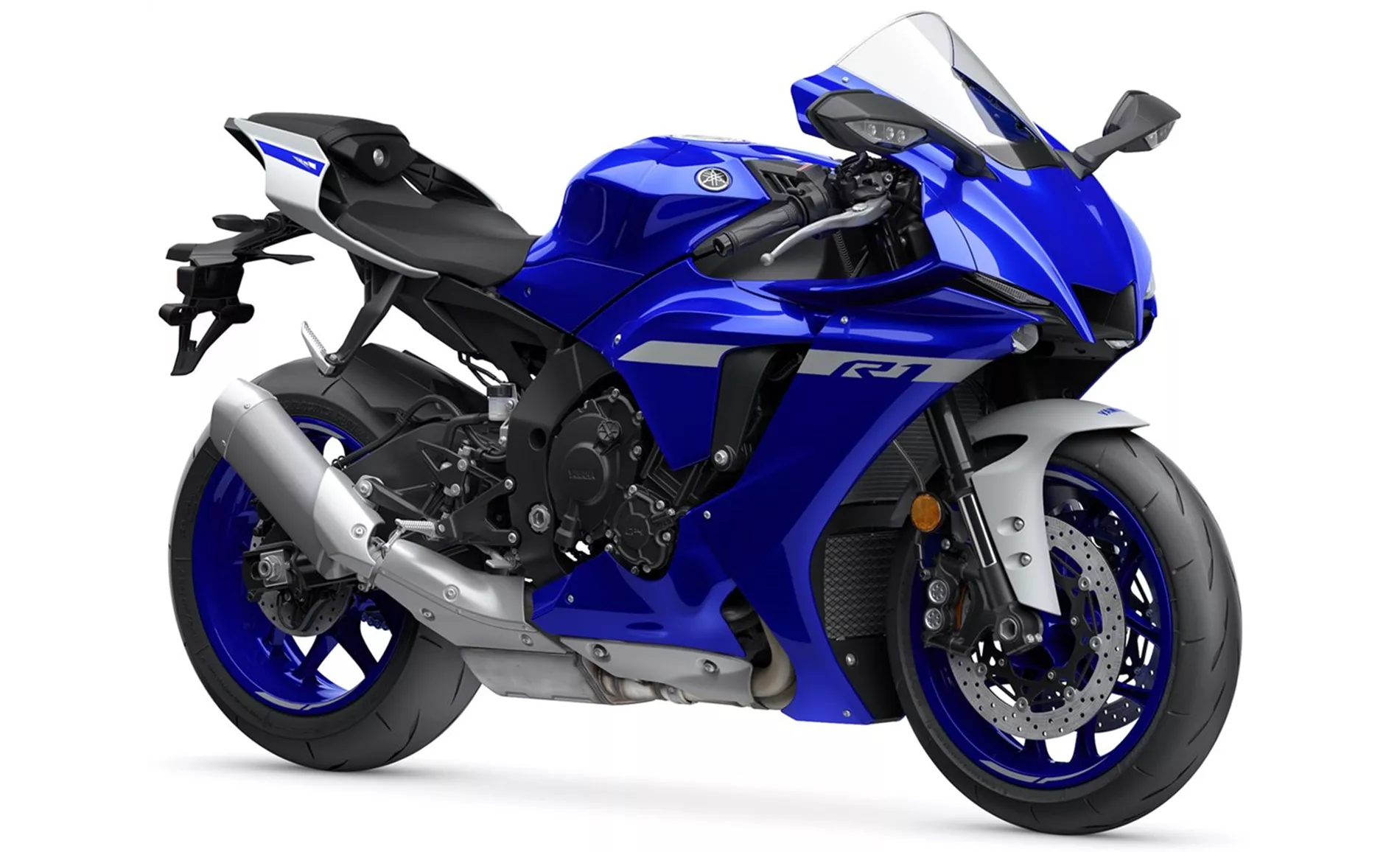
Yamaha R1 2020
Now let's discuss the strengths and weaknesses of each bike. The BMW S 1000 RR 2023 is praised for its very good electronics or control systems, providing riders with advanced features and assistance. It also offers good feedback and stability, enhancing the overall riding experience. However, it is worth noting that some riders have reported engine vibrations as a weakness of the BMW S 1000 RR 2023.
On the other hand, the Yamaha R1 2020 is known for its powerful engine, clean response, and great but not intrusive sound. It also features a stable chassis and high-quality electronics, contributing to its overall impressive performance. Riders have also mentioned the wonderfully noble overall impression of the Yamaha R1 2020. However, some riders have found the brakes of the Yamaha R1 2020 to be not fully satisfactory on the race track.
In conclusion, both the BMW S 1000 RR 2023 and the Yamaha R1 2020 are formidable supersport motorcycles with their own strengths and weaknesses. The BMW S 1000 RR 2023 excels in terms of electronics and control systems, feedback, and stability, while the Yamaha R1 2020 impresses with its powerful engine, clean response, stable chassis, high-quality electronics, and overall premium feel. Ultimately, the choice between these two bikes will depend on individual preferences and priorities.
Caractéristiques techniques BMW S 1000 RR 2023 par rapport à Yamaha R1 2020
Avantages et inconvénients en comparaison
Avantages et inconvénients en comparaison
BMW S 1000 RR 2023
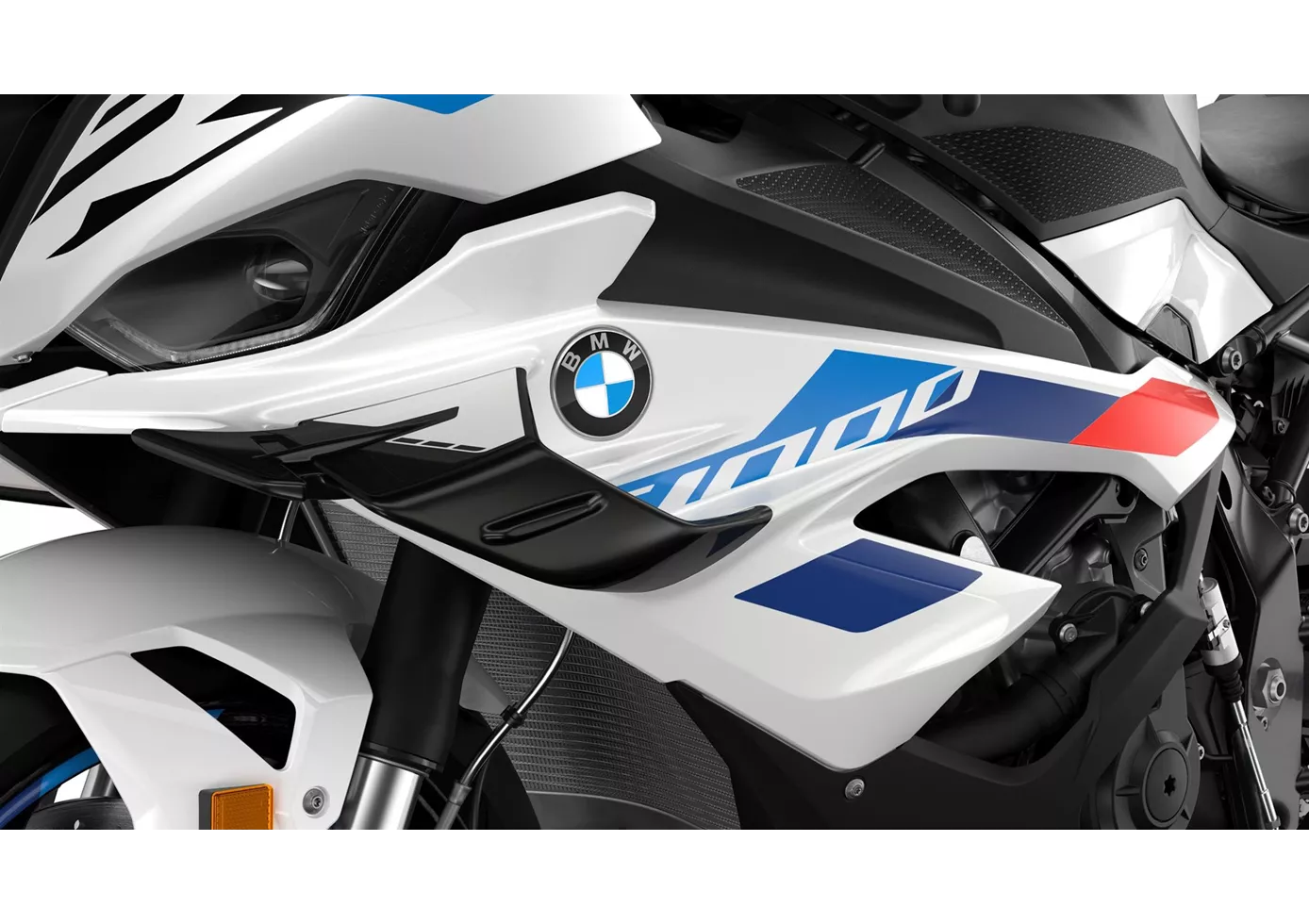
Parmi toutes les nouveautés, celles qui m'ont le plus marqué sont l'électronique et la géométrie de direction. Grâce aux informations supplémentaires fournies par le nouveau capteur d'angle de braquage et aux aides à la conduite révisées, la nouvelle S1000RR dispose désormais d'un ensemble électronique qui permet de conduire non seulement en toute sécurité, mais aussi à grande vitesse, ce qui réjouira particulièrement les pilotes les plus rapides. Mais même le pilote moyen a la possibilité, grâce à quelques caractéristiques supplémentaires comme le Slide Control, de toucher sans danger au style de conduite des professionnels afin de faire bonne figure sur les photos de conduite. Et en plus, c'est amusant. La nouvelle géométrie de direction apporte un peu plus de calme à l'avant et améliore le retour d'information, ce qui est un avantage inestimable, surtout dans les zones limites. La prochaine étape de la chasse à la meilleure Superbike est donc rouverte.
Yamaha R1 2020
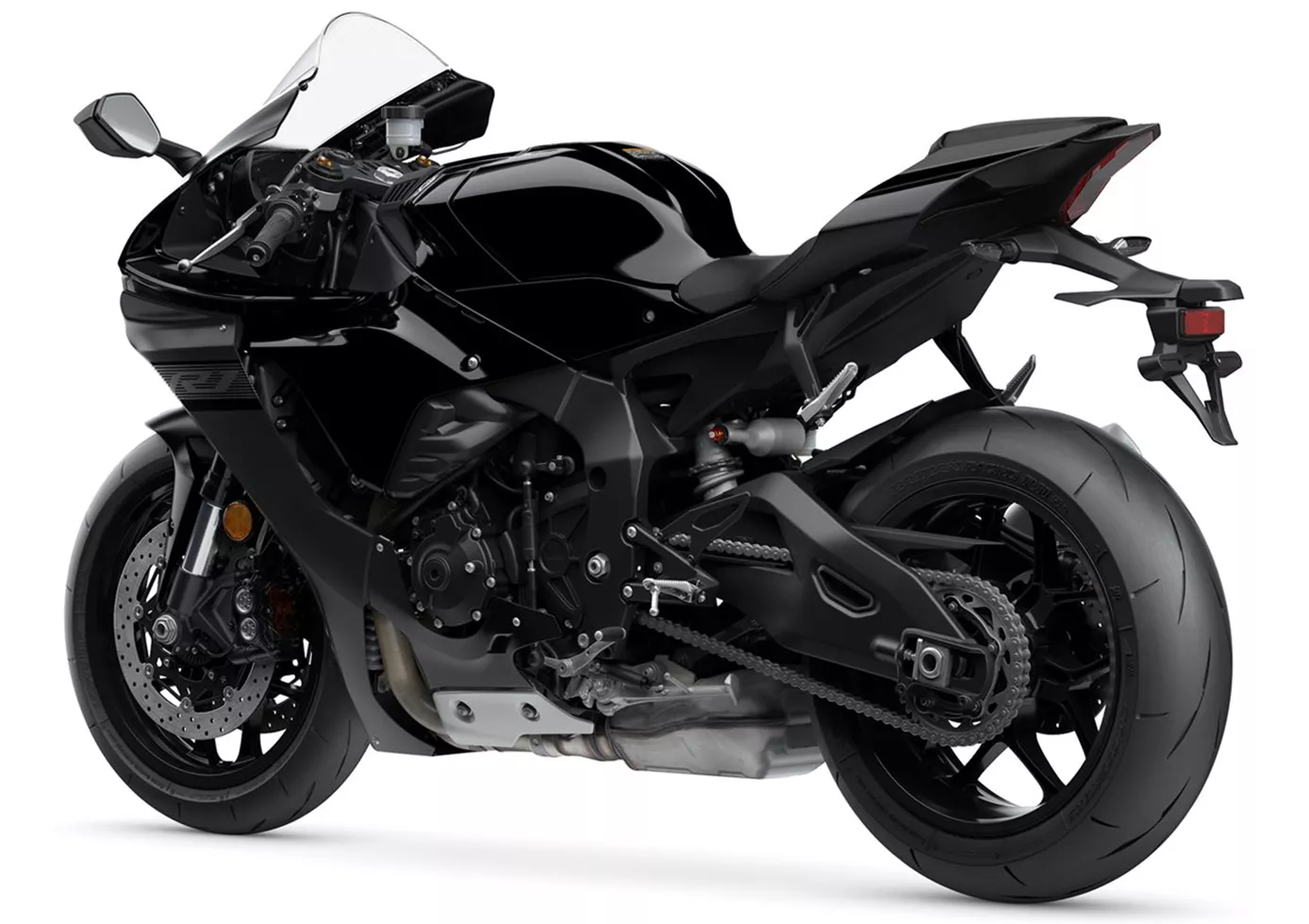
La Yamaha YZF-R1 est arrivée à maturité et fait le bonheur d'innombrables pilotes de circuit. Le moteur brille par sa légèreté et son agilité, la position de conduite surprend positivement et la maniabilité est radicale mais toujours "adaptée à la masse". La machine attire immédiatement l'attention par son aspect et aussi par sa sonorité qui fait chaud au cœur. C'est surtout sur les routes de campagne que la moto marque des points avec les atouts qu'on lui connaît : super moteur, super électronique, super ensemble ! Un vrai plaisir de conduire !
Comparaison des prix Prix moyen du marché BMW S 1000 RR vs Yamaha R1
There are a few key differences between a BMW S 1000 RR 2023 and a Yamaha R1 2020. In terms of price, the actual average prices of both motorbikes are almost the same. Compared to Yamaha R1 2020 there are more BMW S 1000 RR 2023 bikes available on the 1000PS.de Marketplace, specifically 24 compared to 9. It takes less time to sell a BMW S 1000 RR with 61 days compared to 86 days for a Yamaha R1. Since model year 2010 1000PS.de editors have written 135 reviews for the BMW S 1000 RR and 80 reviews for the Yamaha R1 since model year 2005. The first review for the BMW S 1000 RR was published on 4/16/2008 and now has more than 4,000 views. This compares to more than 3,900 views for the first review on Yamaha R1 published on 4/28/2003.

